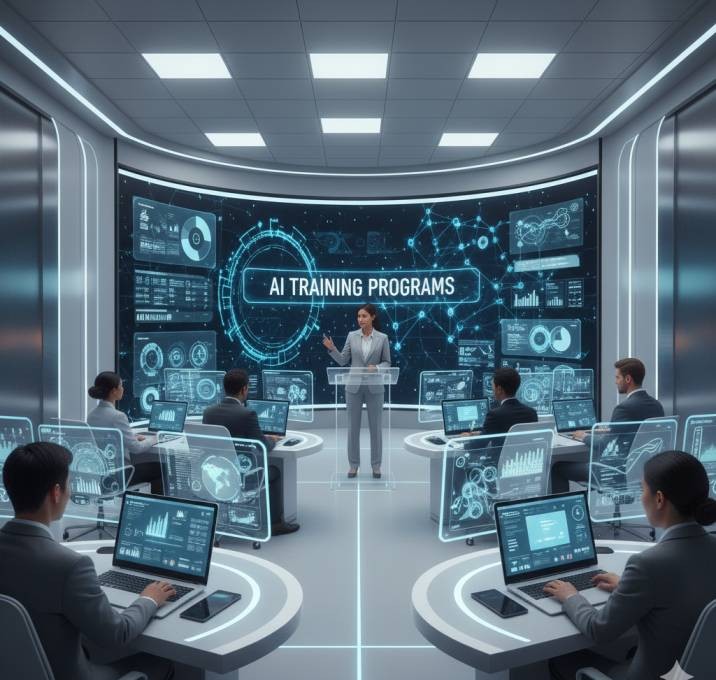Can AI Speak Every Student’s Language? Japan’s Groundbreaking Research Says Yes
Introduction
In today’s interconnected world, over 1.5 billion people are learning a second language, yet student language barriers persist across global classrooms. With multilingual classrooms becoming the norm in countries like Japan, the need for personalized language learning has never been more critical. (Source)
Educators around the world are grappling with one question:
Can we create truly inclusive classrooms where every student feels understood, regardless of their native tongue?
A groundbreaking answer may have just emerged from Japan.
Fujitsu and Osaka University have embarked on a visionary project to break the language wall in education. Their latest innovation in AI multilingual education is designed specifically for CLD (culturally and linguistically diverse) children. This isn’t just another tech trial—it’s a bold leap toward inclusive AI education, where no student is left behind due to language limitations.
Let’s dive into how Japan’s AI-powered education project is reshaping the future of learning—and how you can be part of this global shift.
The Language Gap in Today’s Classrooms
Across the globe, millions of students are struggling, not because they lack intelligence or motivation, but because they can’t fully grasp the language of instruction. This is especially true in Japan, where the number of CLD children has surged in recent years due to increasing globalization and immigration.
The traditional classroom isn’t built for multilingual learners. Educators often lack the tools to accommodate diverse linguistic needs, resulting in reduced participation, academic performance gaps, and social isolation for non-native speakers.
But here’s the twist: what if AI could step in as a real-time language bridge?
Japan’s AI-Powered Multilingual Education Experiment
In June 2025, Fujitsu Japan and Osaka University unveiled a cutting-edge AI solution tailored for student language barriers. The goal? To help CLD children in Japan learn alongside their peers without being hindered by language differences.
The research team focused on developing an AI real-time translation system capable of converting Japanese into multiple languages instantly—and with contextual accuracy. Unlike standard translation apps, this AI system takes the nuance of educational content into account, allowing for richer understanding and better retention.
But the real beauty lies in its personalized language learning capabilities. The AI doesn’t just translate; it learns from each student’s progress. Thus, adapting content delivery to suit their pace, comprehension level, and even cultural context. This intelligent approach ensures that students aren’t just decoding words—they’re truly grasping concepts.
Inside the Technology: How It Works
At its core, this innovation uses Fujitsu’s proprietary AI translation engine, fine-tuned to handle multilingual classroom settings. It integrates with tablet-based learning environments, where students receive translated versions of the lesson content in real-time. It covers everything, be it math problems, science explanations, or history narratives.
Teachers can speak and write in Japanese, and the AI system immediately renders the material in the student’s preferred language. It could be anything, including Vietnamese, Portuguese, or Tagalog. This removes the need for bilingual instructors or peer interpreters, democratizing access to education in ways never seen before in Japan.
Additionally, the system collects feedback from students’ interactions, enabling personalized language learning models that evolve with time. It identifies gaps, adjusts instruction style, and even offers supplementary support, all in the student’s native language.
Beyond Translation: Building Truly Inclusive AI Education
What sets this project apart is not just the language technology but its philosophy of inclusion. The collaboration recognizes that inclusive AI education must go beyond mere translation. It should empower students to feel culturally validated and academically competent.
The Japanese AI research also emphasizes teacher empowerment. Educators receive training on how to integrate the AI system seamlessly, ensuring they become facilitators of inclusive learning rather than passive observers. Teachers also gain access to insights on student progress, enabling more effective intervention strategies.
This holistic approach is a game-changer for education systems across the globe. It is especially in multicultural societies like the United States, Canada, and parts of Europe, where linguistic diversity is part of daily classroom life.
A Model for the World
The implications of this Japanese AI research are profound. If replicated globally, this technology could dismantle one of education’s most persistent barriers—language inequity.
Imagine a rural school in India using AI to teach Hindi-speaking students alongside Tamil speakers. Or a public school in California translating science classes into Spanish, Mandarin, or Farsi in real-time.
AI is making multilingual education not just possible but scalable. With the right frameworks in place, schools can now foster equity in classrooms where, previously, language was a wall instead of a bridge.
The Future Demands AI-Literate Educators
But here’s the catch: technology is only as powerful as the people who implement it.
For AI multilingual education to succeed, we need educators and administrators who understand how to deploy, adapt, and expand these tools. That’s where upskilling becomes essential. The world needs AI-literate educators who can shape the future of learning.
This is your opportunity to lead the change.
Become a Certified AI Educator and Shape Tomorrow’s Classrooms
If you’re an educator, administrator, or professional passionate about inclusive education, now is the time to future-proof your skillset.
The AI Educator certification by AI CERTs® equips you with the knowledge and tools to:
- Harness AI for personalized language learning.
- Tackle student language barriers head-on.
- Implement multilingual AI solutions in real-world classrooms.
- Contribute meaningfully to the movement for inclusive AI education.
You don’t need to be a coder or a data scientist. This certification is designed for real-world educators who want to bridge the gap between teaching and technology.
As Japan’s breakthrough research shows, AI isn’t replacing teachers; it’s empowering them. And with the right training, you can be the educator who ensures every student feels heard, understood, and included.
Final Thoughts
Japan has shown us that AI can indeed speak every student’s language, not just in words but in empathy, adaptability, and cultural relevance. With projects like the one led by Fujitsu and Osaka University, we are inching closer to a world where education is not limited by language.
Now, it’s your turn to take the lead.
Empower yourself.
Empower your students.
Enroll in the AI Educator certification from AI CERTs® today. Let’s create classrooms where everyone belongs in every language, everywhere.
Recent Blogs

FEATURED
AI Training Programs for Educators: How to Become an Authorized Training Partner
October 31, 2025
FEATURED
Designing Scalable AI Training Programs for Global Delivery
October 31, 2025
FEATURED
Role of AI Training Programs in Upskilling Non-Tech Professionals
October 31, 2025
FEATURED
Top Features to Look for When Partnering on AI Training Programs
October 31, 2025
FEATURED
Why AI Training Programs Are Becoming the Global Standard
October 30, 2025

